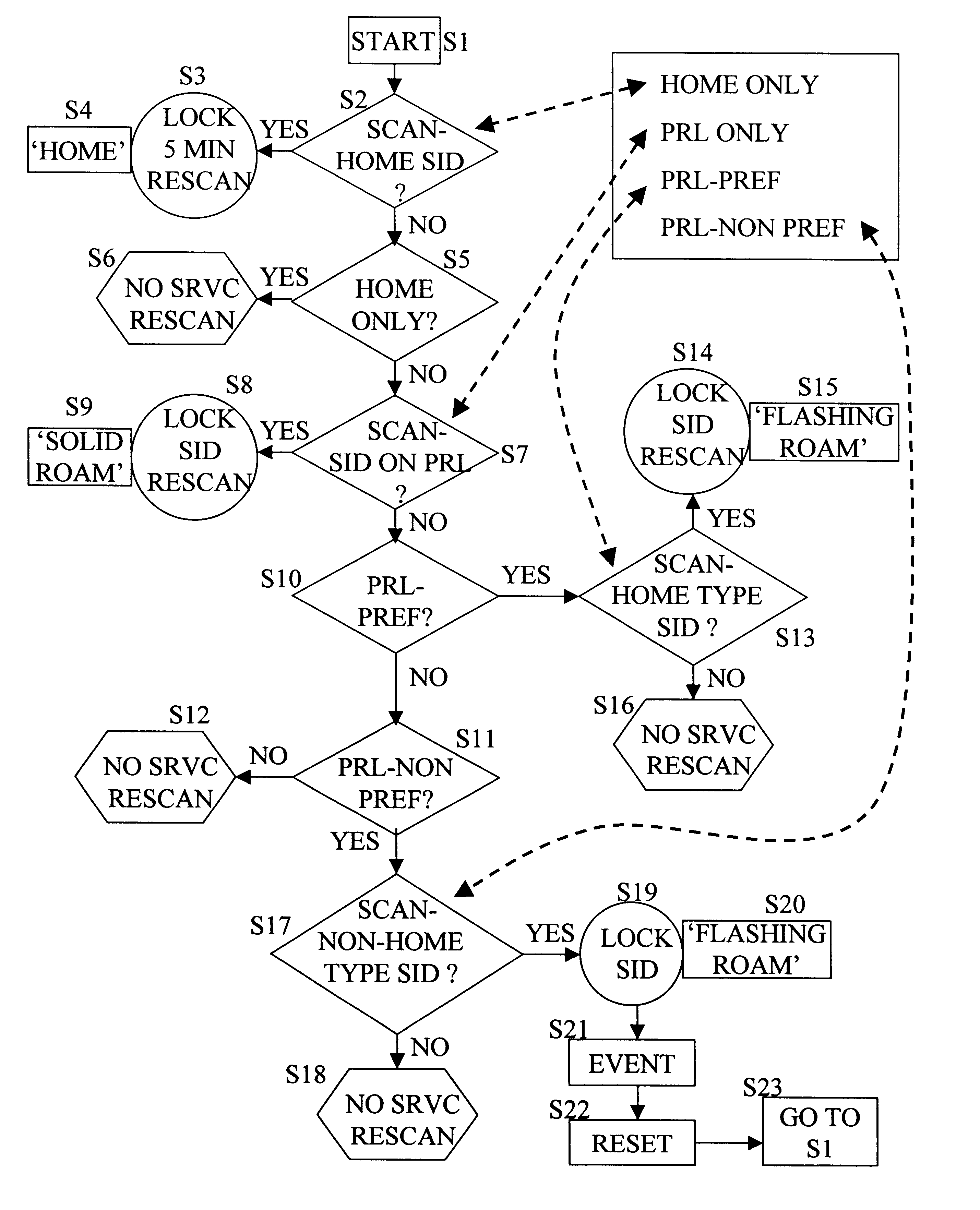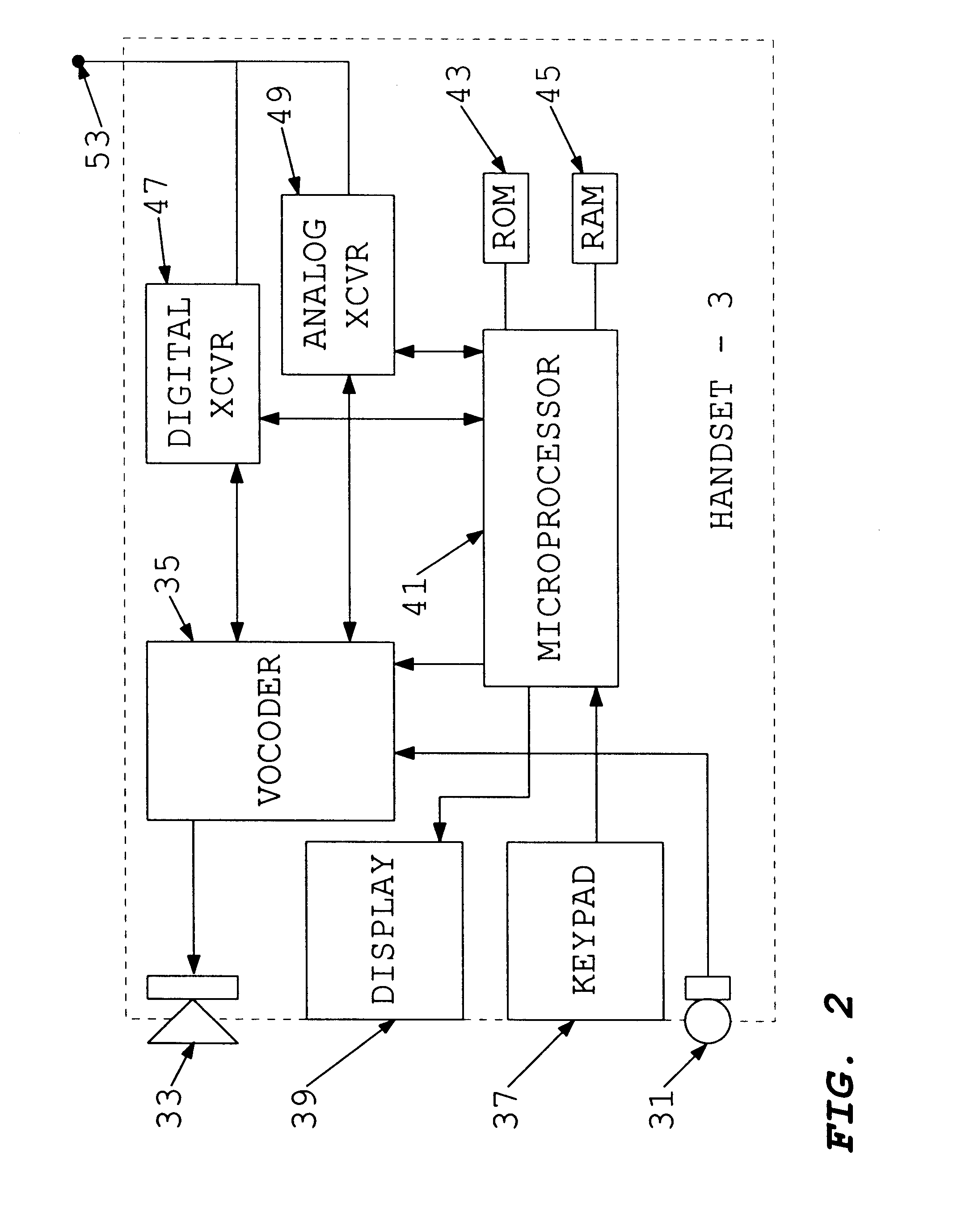Preferred roaming list and system select feature
- Summary
- Abstract
- Description
- Claims
- Application Information
AI Technical Summary
Benefits of technology
Problems solved by technology
Method used
Image
Examples
Embodiment Construction
The present invention uses a hierarchy of system selection techniques. In the preferred embodiments, the highest level technique is for the customer's station to select the home system assigned for that customer. The next highest level of selection enables the station to select systems identified in a preferred roaming list (PRL). The PRL list may identify various systems operated by the same service provider as the home system and / or systems of other service providers with whom the home service provider has negotiated favorable roaming agreements. Both of these first two modes rely on detection of a system identifier matching an identifier stored in a memory of the station. The selection hierarchy implemented by the customer station will include at least one and preferably two further selection techniques. Each such further technique first attempts to find a system whose identifier matches one in memory. The station will only select a less favorable system when the station can not ...
PUM
 Login to View More
Login to View More Abstract
Description
Claims
Application Information
 Login to View More
Login to View More - R&D
- Intellectual Property
- Life Sciences
- Materials
- Tech Scout
- Unparalleled Data Quality
- Higher Quality Content
- 60% Fewer Hallucinations
Browse by: Latest US Patents, China's latest patents, Technical Efficacy Thesaurus, Application Domain, Technology Topic, Popular Technical Reports.
© 2025 PatSnap. All rights reserved.Legal|Privacy policy|Modern Slavery Act Transparency Statement|Sitemap|About US| Contact US: help@patsnap.com



